A Brief History on Cacao pre-Columbus
Apr 03, 2024
The western world needs evidence and recently so many people say that "ceremonial cacao" is not a thing but just a marketing ploy. Much of the history of cacao comes from oral tradition passed down from generation to generation. That which was written was destroyed by the colonizers.
Cacao in oral and written history was used for ceremonies ad was limited to the upper class or royalty, warriors and medicine people/priests. It has always been a sacred drink no matter what white Instagram influencer says. It was and is primarily used for ceremonies and for medicine. The original name of the drink for where cacao was used was “chocolate,” which translates to “bitter water.” The addition of sugar to cacao is a European influence who industrialized cacao and used it like a status symbol similar to the later Aztecs.
The oral story of cacao has many versions which include gods, lightning, maize and more. These stories are ones told in our classes and circles, and we will share a few here later. What one must know is that Cacao in native languages is Kä-kā-ō.
The first evidence of cacao use by the Mayo-Chinchipe civilization in Ecuador dates from approximately 5,300 years ago. Traces of theobromine have been found in their pottery, suggesting cacao was first used in a drink.
The three most prominent civilizations in Mesoamerica that developed a distinct and elaborative cacao culture were the Olmec's, the greater Maya Empire, and the Aztecs. These early civilizations created cacao tree plantations, had extensive trade between them (Aztec and Maya), and influence on other lesser known civilizations who used cacao in ceremony as well such as the Zapotec's and the Purapecha.
Evidence from pre-Olmec (4000 BC – 1500BC) and Olmec (1500 BC to 400 BC) pottery proposes these civilizations used cacao in a drink, and primarily for religious purposes. The Olmec's of southern Mexico were the first to ferment, roast, and grind cacao beans for drinks and gruel, possibly as early as 1500 B.C
Mayan's civilization spans thousands of years, beginning around 2000 BC and continues today despite continued persecution. While the civilization that once was does nor remain the indigenous Maya do, and they still use cacao in ceremony. Cacao has always been and continues to be an integral part of their culture.
To prepare this drink the cacao beans were very briefly fermented and then dried, then (usually but not always) roasted on a hot plate over a fire. The husk were removed, and the beans were then ground into a paste using a “mutate,” which consists of a curved stone baseplate and a stone roller. The beans were crushed between the two to form a paste. The paste was then added to water and mixed.
Cacao was also valued as an important commodity, religious and status symbol in the Aztec Empire, which began to flourish around 1345 CE. The Mayans and the Aztecs had a robust trade, with cacao being highly valued. The Aztecs continued the tradition of “xocolaltl,” adding their own flavorings and documenting its use in religious and other ceremonies. The drink was prepared by pouring the hot mixture back and forth from vessel to create a froth, which was an significant part of the presentation – the more froth the better. Perhaps most famously, “chocolate” was served frequently in the court of Montezuma, who ruled the Aztec Empire from 1502 to 1520. This is the time when Europeans first stumbled upon cacao.



